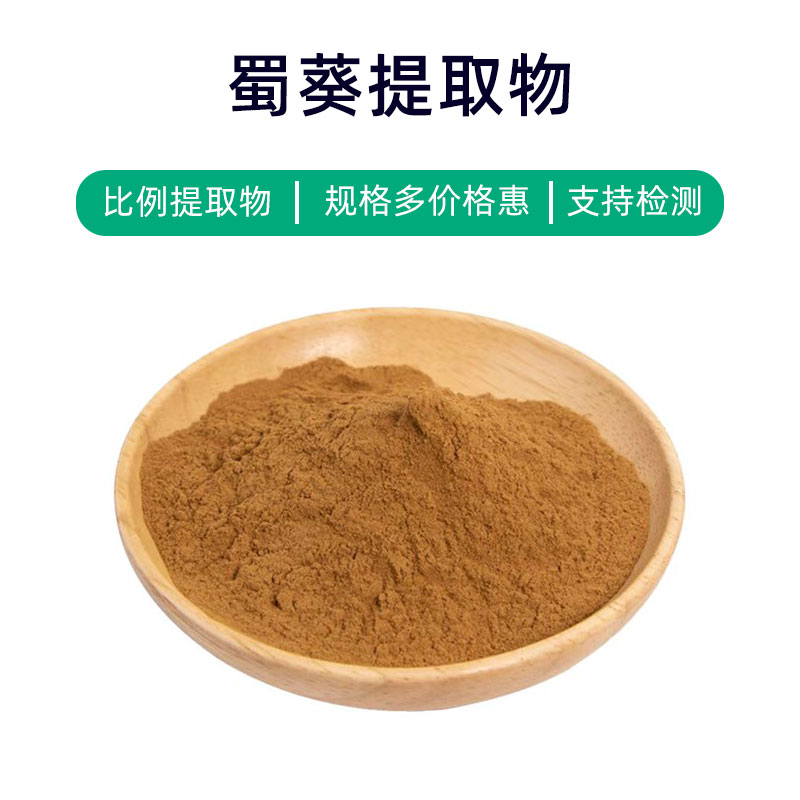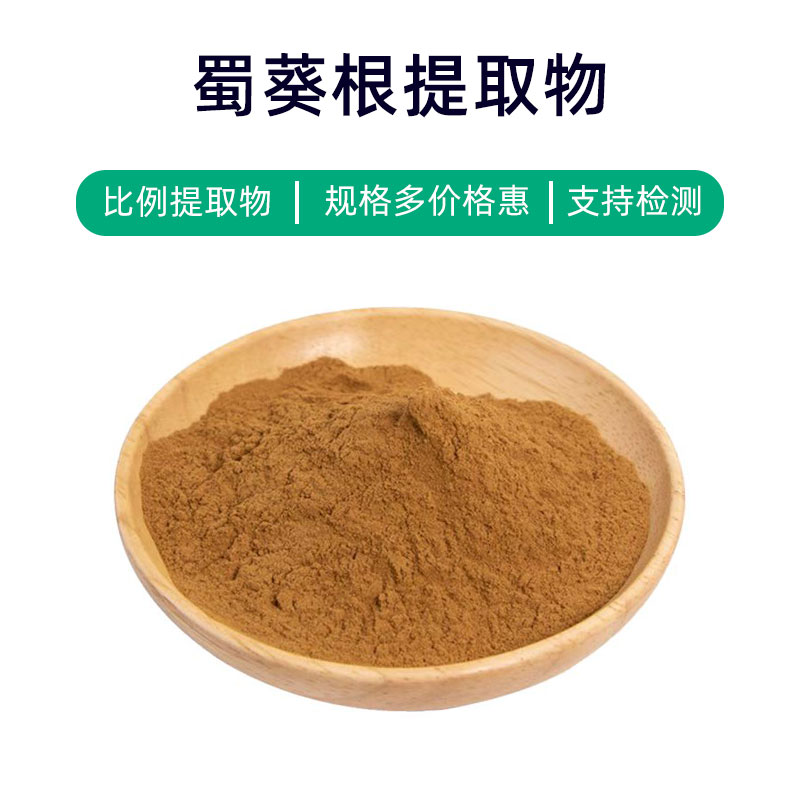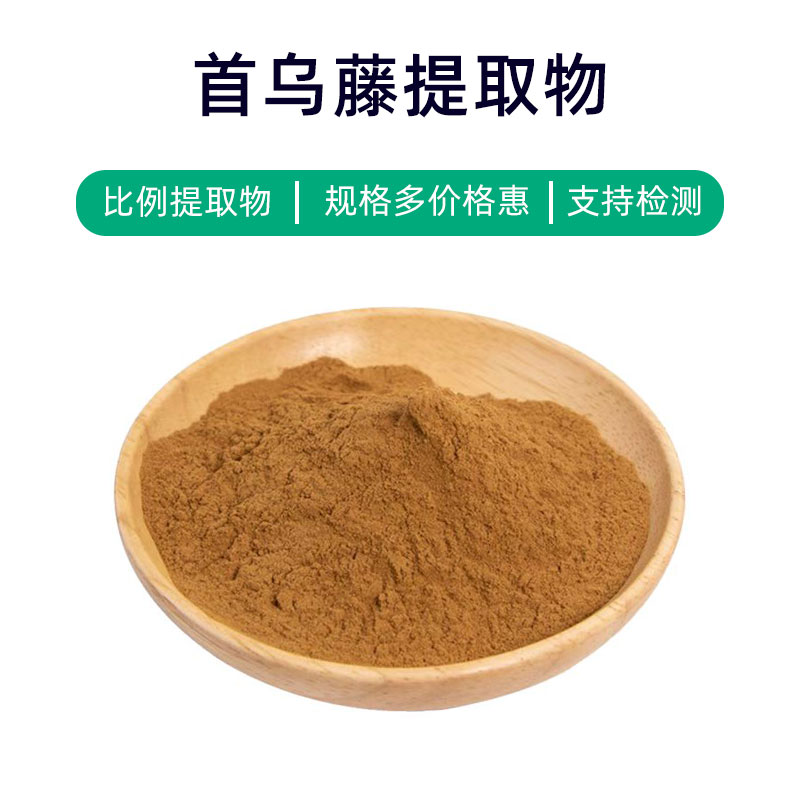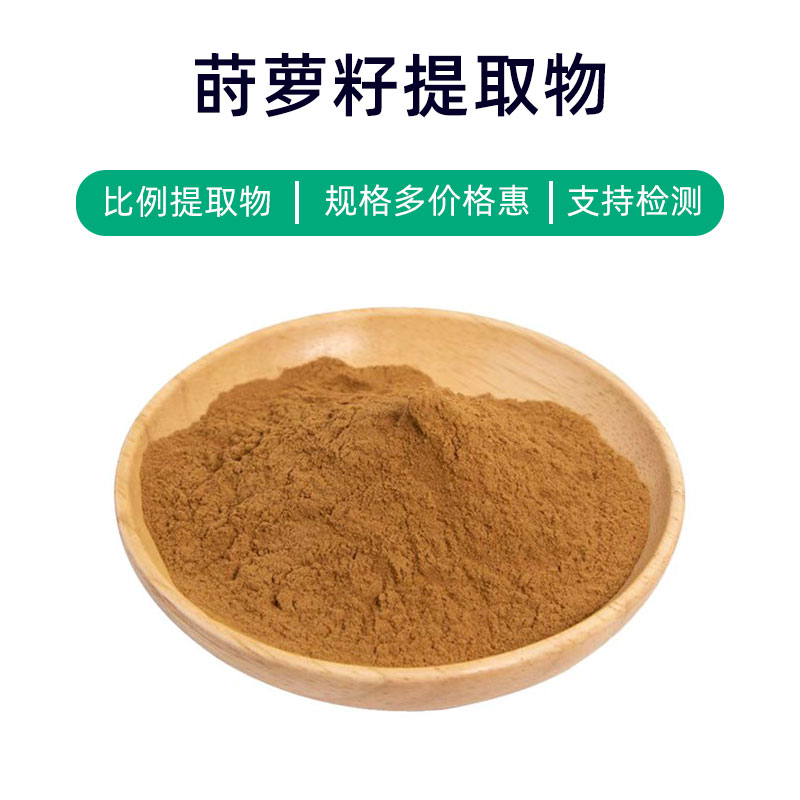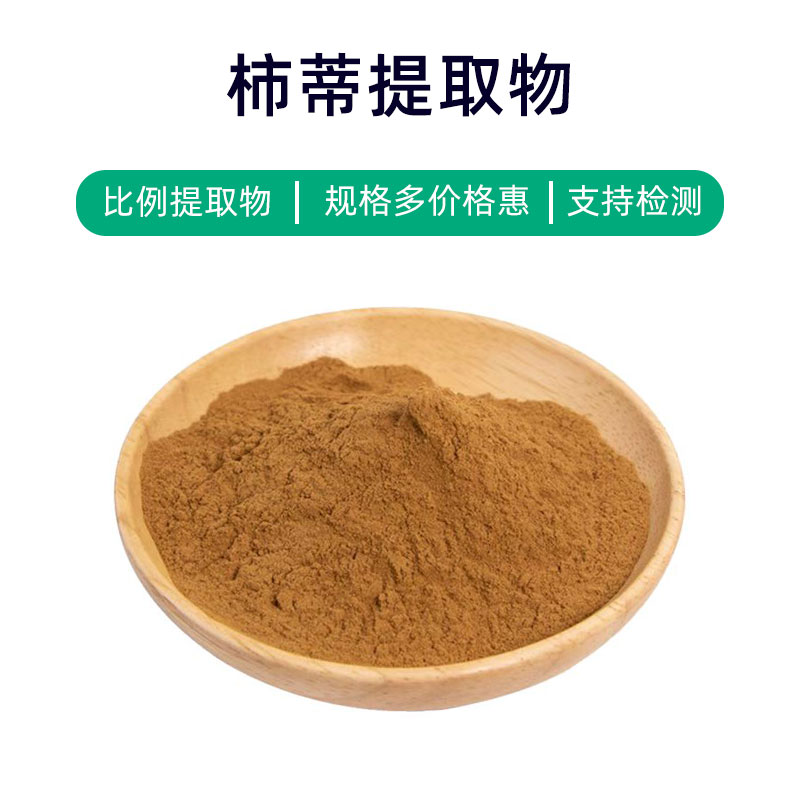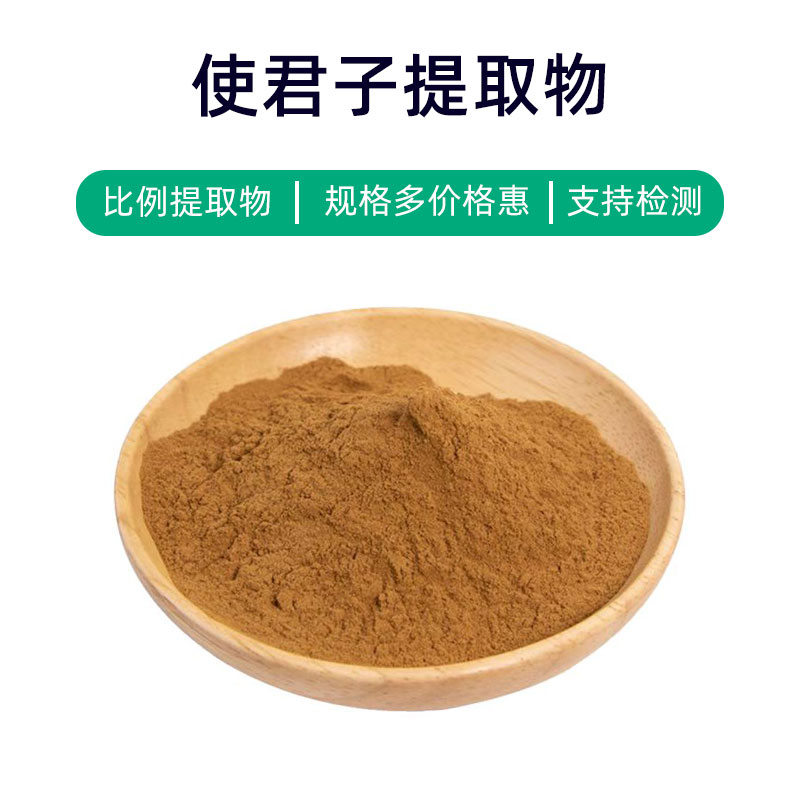Introduction to Hawthorn Leaf Extract
Hawthorn leaf extract is a natural plant extract derived from the leaves of the hawthorn tree, primarily composed of flavonoid compounds, triterpenoid saponins, and vitamin C. These components provide the extract with various health benefits.
First, hawthorn leaf extract is rich in flavonoids, which possess antioxidant properties and help eliminate free radicals, aiding in the protection of cells against oxidative stress and offering some protection against cardiovascular diseases and cancer.
Secondly, the extract contains abundant triterpenoid saponins, which can enhance the heart's contractility and dilate blood vessels, improving cardiovascular function, lowering blood pressure, reducing lipids, and enhancing blood circulation, providing significant protection for heart and brain health.
Additionally, hawthorn leaf extract is high in vitamin C, which boosts immunity, has anti-inflammatory and antibacterial effects, and helps in the prevention of colds and other respiratory infections.
In terms of applications, hawthorn leaf extract is extensively used in health supplements, pharmaceuticals, and the food industry. In health supplements, it's commonly formulated for products that regulate blood lipids, lower blood pressure, and improve cardiovascular health. In pharmaceuticals, it can be used to prepare cardiovascular medications or as an adjunct treatment for cardiovascular diseases. In the food industry, it is processed into various health foods and beverages.
Manufacturing Process of Hawthorn Leaf Extract
The production process for hawthorn leaf extract typically includes the following steps:
- Raw Material Preparation: Select fresh hawthorn leaves as the extraction material, ensuring the leaves are of good quality, free from pests and mold.
- Washing: Clean the harvested hawthorn leaves to remove surface impurities, dust, and pesticide residues, ensuring cleanliness and hygiene.
- Crushing: The washed leaves are crushed to increase extraction efficiency by making them finer.
- Extraction Process: The crushed leaves are immersed in an appropriate solvent (such as ethanol or water) to fully dissolve the active ingredients.
- Extraction Time Control: The extraction time and temperature are controlled, usually carried out at 40-60 degrees Celsius for 12-24 hours to ensure effective extraction of active components.
- Filtration: The extraction solution is filtered to separate solid particles and impurities, resulting in a clear extract.
- Concentration: The filtered extract is concentrated by evaporation to remove the solvent, yielding concentrated hawthorn leaf extract.
- Drying and Powdering: The concentrated extract is dried to reduce moisture content to a certain level and then powdered to obtain the final hawthorn leaf extract powder.
- Quality Control: Quality checks on the hawthorn leaf extract are conducted, including testing for main component content, harmful substances like microbes and heavy metals.
- Packaging and Storage: The quality-compliant hawthorn leaf extract is packaged in appropriate materials, sealed to prevent sunlight and moisture, and stored in a cool, dry environment to maintain stability and efficacy.
Effects and Side Effects of Hawthorn Leaf Extract
The manufacturing process of hawthorn leaf extract generally involves the following steps:
- Raw Material Preparation: Choose fresh hawthorn leaves for extraction, ensuring the leaves are of good quality, free from pests and mold.
- Washing Treatment: Clean the harvested hawthorn leaves to remove surface impurities, dust, and pesticide residues, maintaining cleanliness.
- Crushing: The cleaned hawthorn leaves are crushed to increase extraction efficiency.
- Extraction Process: The crushed leaves are immersed in an appropriate solvent (like ethanol or water) to thoroughly extract active ingredients.
- Extraction Time Control: Control the extraction time and temperature, typically extracted at 40-60 degrees Celsius for 12-24 hours.
- Filtration: Filter the extract to separate solid particles and obtain a clear liquid.
- Concentration: Concentrate the filtered extract by evaporation to remove the solvent.
- Drying and Powdering: Dry the concentrated extract to reduce moisture, then pulverize it to obtain the final powder.
- Quality Inspection: Check the extract for content of main ingredients and harmful substances.
- Packaging and Storage: Package according to quality standards, sealing it to prevent sunlight and moisture, and store in a suitable environment.
Applications and Dosage of Hawthorn Leaf Extract
Hawthorn leaf extract finds extensive use in pharmaceuticals, food, and cosmetics. Here’s a breakdown of its application and recommended dosages in various fields:
- In Pharmaceuticals:
- Cardiovascular Health: Hawthorn leaf extract is often made into capsules or tablets, typically taken at a dose of 100-300 mg, 2-3 times daily.
- Lipid and Blood Pressure Reduction: Used as an adjunct in treating high blood lipids and hypertension, usually taken 1-2 times per day at a dose of 100-200 mg, based on medical advice.
- Dyspepsia: Can be used as a herbal remedy for indigestion, generally at a dose of 100-200 mg, before or after meals.
- Antibacterial and Anti-inflammatory: Used for treating infectious diseases, typically prepared as oral solutions or topical patches, with dosages tailored to specific cases.
- In Food:
- Health Foods: Used as an ingredient in health food products, such as tablets, solutions, or beverages, with dosages as per product instructions.
- Functional Foods: Added to teas, cookies, candies, etc., to enhance functionality and nutritional value, with dosages based on specific products.
- In Cosmetics:
- Skincare Products: Rich in antioxidants, hawthorn leaf extract is utilized in creams and masks, known for its antioxidant, whitening, and spot-diminishing properties, with amounts based on product formulas.
- Hair and Body Care Products: Incorporated into shampoos and body washes for their cleansing, antibacterial, and soothing effects, usually as part of the total formulation.
Overall, dosages for hawthorn leaf extract in pharmaceuticals should follow medical guidance, while dosages for food and cosmetic applications depend on the specific product formulations. It’s recommended to consult a healthcare professional before using any products to ensure safety and effectiveness.
Introduction to the Source Plant of Hawthorn Leaf Extract, Distribution, and Growth Environment
The source plant of hawthorn leaf extract is the hawthorn (Crataegus pinnatifida). Below is a detailed description of the hawthorn plant, its distribution, and growth conditions:
Plant Description:
Hawthorn (Crataegus pinnatifida), also known as hawthorn tree, hawthorn fruit, or hawthorn berry, is a deciduous small tree belonging to the Rosaceae family. It typically has a bushy tree form, with a dense crown and slightly thorny branches. The leaves are palmately compound with serrated edges, and the leaf surface appears deep green. In spring, hawthorn produces small white flowers that bloom in umbrella-shaped clusters. In autumn, the fruit ripens to a red or orange color and has a round, disc-like shape.
Distribution:
Hawthorn is primarily found in China's Yellow River Basin, Yangtze River Basin, North China, and Northwest regions, especially in areas like the Loess Plateau, middle and lower Yangtze regions, and Northeast China, making it one of China's major fruit trees. Additionally, hawthorn is found in Japan, the Korean Peninsula, and Southeast Asia.
Growth Environment:
Hawthorn has a broad tolerance for growth environments and is adaptable. It thrives in sunny conditions and is not very demanding about soil quality, though it prefers loose, fertile, well-drained sandy loam or loamy soil. The plant is drought-resistant and can tolerate shade, but its growth may slow in overly damp conditions. It can withstand low temperatures and saline-alkaline soils, but protection is needed during cold winters.
Overall, the hawthorn plant is widely distributed across China, known for its attractive form and fruit, which are used both for consumption and medicinal purposes, leading to its extensive cultivation and utilization.
Processing and Storage of Hawthorn Leaf Extract
Processing of hawthorn leaf extract typically involves these steps: First, fresh hawthorn leaves are gathered and initially washed to remove impurities. Then, the leaves are dried to reduce moisture. Following that, an appropriate extraction agent (such as water or ethanol) is used to extract the active components from the hawthorn leaves to obtain the extract. Finally, through filtering, concentration, and drying processes, the final hawthorn leaf extract product is achieved. For storage, the extract should be kept in a cool, dry, and ventilated place, away from direct sunlight and high temperatures, to ensure stability and the effectiveness of its active ingredients.
Monica Sun is a seasoned expert in the plant extraction industry with over a decade of experience in research and production. She specializes in the extraction and purification of plant active ingredients, focusing on driving innovation in natural product applications. Monica has participated in the development of multiple functional plant extracts, delivering high-value natural raw material solutions for the health food, pharmaceutical, and dietary supplement sectors.









